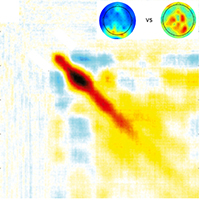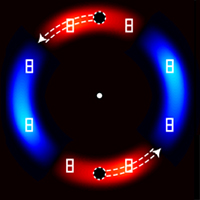Projects

Predicting the Present
The brain needs time to process sensory input, meaning that our conscious experience of the world is based on information that is outdated by the time we perceive it. One way that the brain might compensate for its internal delays is by prediction. This project uses time-resolved EEG recordings to study the role of anticipatory neural activity in “predicting” the present.

Shortcuts to consciousness
Although the brain needs time to process sensory input, being able to rapidly detect and respond to events in the outside world is very important for any organism's survival. Because in some cases speed is more important than accuracy, our brains have evolved to sometimes 'fast-track' crucial information so that we are able to act on it. To do so, the brain makes assumptions, and when these assumptions are violated, visual illusions result: we see things that are not really happening. This project uses visual illusions such as the flash-lag effect to understand the shortcuts that the brain takes when compensating for its own delays.

When predictions fail
The brain uses predictive strategies to compensate for its own delays, allowing us to "see" objects where they are right now, even if the sensory information about "right now" has not yet been processed. But what happens if events unfold unpredictably, such as when a moving object changes direction? The brain would need time to detect that its prediction was wrong, and during that time it would continue to extrapolate the object along its initial trajectory. What happens to these failed predictions? How does the brain revise its old prediction? This project uses a combination of multivariate EEG decoding and behavioural techniques to understand how the brain corrects its failed predictions.
If you are interested in contributing to any of these projects, or have another idea you would like to discuss, please get in touch!
We gratefully acknowledge funding from the following sources:


